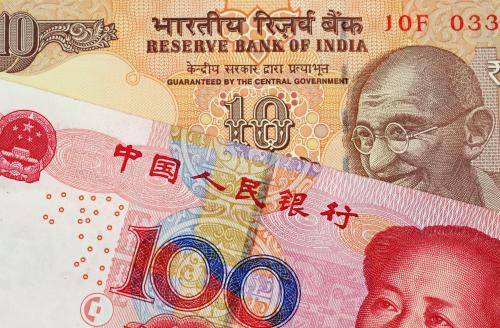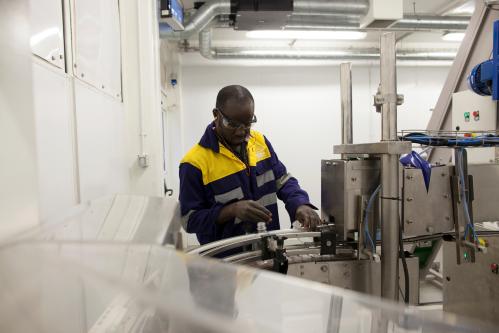Content from the Brookings Institution India Center is now archived. After seven years of an impactful partnership, as of September 11, 2020, Brookings India is now the Centre for Social and Economic Progress, an independent public policy institution based in India.
This article is a part of India 2024: Policy Priorities for the New Government, a compendium of policy briefs from scholars at Brookings India, edited by Dhruva Jaishankar and Zehra Kazmi, which identifies & addresses some of the most pressing challenges that India is likely to face in the next five years.
China today looms large in India’s consciousness, with implications for India’s neighbourhood and connectivity initiatives, trade policy, and incoming investment. The next government will need to focus on certain priorities.
Improve Aid Delivery
Offering a credible alternative to the deepening Chinese economic presence in the neighbourhood remains a pressing challenge. While India has taken the first steps in this regard through a new willingness to work together with other countries, including Japan and the United States, constraints in capacity to deliver projects on time is a considerable obstacle. Limitations on funding is another. Working within these constraints could work to New Delhi’s advantage, rather than attempting to replicate the China model, which is running into its own problems, a result of a lack of due diligence on projects, cost-overruns and debt burdens foisted on host countries. Instead, India should work towards providing an efficient, transparent and financially-sustainable alternative. As a start, beefing up the Developmental Partnership Administration at the Ministry of External Affairs, which was conceived as the nodal body for overseas development projects, would serve in improving the capacity to deliver.
Assess Trade Dependence
India’s trade deficit with its biggest trading partner, China, has risen from $38 billion in 2014 to $58 billion in 2018. A lack of competitiveness in manufacturing, continued dependence on Chinese machinery and equipment, and market access problems in China for Indian companies, particularly in pharmaceuticals and information technology sectors, have all contributed to an increasingly unsustainable trade relationship. What has not helped is the absence of a coherent policy in dealing with China, a consequence of a diffused approach to both trade and investment regulation. As a start, the next government needs to undertake a comprehensive cross-sector study analysing sector-wise dependence on China, particularly in sensitive sectors such as active pharmaceutical ingredients (APIs), where there is near-complete dependence on Chinese imports. The next step will be formulating long-term strategies to build self-sufficiency in critical sectors, starting with APIs.
Encourage but Screen Investments
Keeping up growth in foreign direct investment (FDI) and ensuring a credible and transparent regulatory regime are both equally important immediate challenges. FDI growth plateaued last year, at $60.97 billion in 2017-18 compared to $60.22 billion in the previous year. While FDI restrictions in many sectors have eased, regulation remains a challenge, with the responsibility for approval shared between the Reserve Bank of India (RBI) through the automatic FDI route, and the Department of Industrial Policy and Promotion (DIPP) and individual ministries for other investments. This follows the abolishing of the Foreign Investment Promotion Board with the aim of streamlining approvals. With an increasing share of FDI flowing towards India’s services sector, including foreign acquisitions of Indian start-ups, regulation remains a challenge, especially with the new, diffused approvals process. A first step towards addressing it would be creating a fair and credible regulatory regime, for instance along the lines of the Committee on Foreign Investment in the United States. A credible and predictable regulatory mechanism would not only make approvals more transparent, but also better regulate investments in emerging sensitive industries.
The Brookings Institution is committed to quality, independence, and impact.
We are supported by a diverse array of funders. In line with our values and policies, each Brookings publication represents the sole views of its author(s).






Commentary
India 2024: An interdependent China and India
May 17, 2019